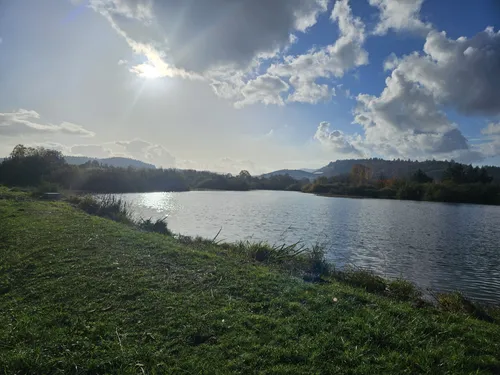
Albany, Oregon, nestled in the heart of the Willamette Valley, offers a plethora of outdoor adventures, drawing nature enthusiasts and casual hikers alike. The region’s stunning topography, characterized by lush landscapes and meandering waterways, establishes an ideal setting for exploration. Here, we examine five scenic hiking trails that encapsulate the natural beauty and ecological significance of Albany, providing both recreational pleasure and an opportunity for deeper contemplation.
1. William L. Finley National Wildlife Refuge
Located at 26208 Finley Refuge Rd., the William L. Finley National Wildlife Refuge spans approximately 5,300 acres of rich wetland habitats. This refuge is emblematic of the intricate ecosystems that thrive in the Willamette Valley. The trails meander through diverse environments, including riparian zones, prairies, and oak woodlands. The primary trail, the Woodpecker Loop, is just over two miles long and offers mesmerizing views of the wetlands, especially during the migratory seasons when various bird species flock to the area.
The significance of this refuge extends beyond mere aesthetic appeal; it serves as a crucial habitat for numerous threatened and endangered species. As hikers traverse the trails, they may witness wood ducks, western meadowlarks, and the more elusive California quail in their natural habitats, beckoning a contemplative approach to wildlife conservation and biodiversity.
2. Talking Water Gardens
Situated at 5th & Water Ave NE, the Talking Water Gardens is a remarkable fusion of art and nature, designed to highlight the importance of water as a vital resource. This 15-acre park features an educational walking trail that showcases unique wetland habitats and promotes sustainable practices in urban settings. The main trail loops around a beautifully constructed bioswale, making it a delightful experience for anyone interested in ecological design.
The gardens also serve a functional purpose, utilizing innovative techniques to cleanse stormwater. This integration of nature and technology fosters a deeper appreciation for environmental stewardship, striking a chord with hikers who seek to find meaning in their surroundings. The interplay of art installations, natural vegetation, and flowing water enhances the overall sensory experience, rendering even the briefest stroll a profound engagement with the natural world.
3. Santiam River Trail
The Santiam River Trail, accessible via multiple entry points along the riverbanks, exemplifies the dynamic interplay between riverine ecosystems and recreational pathways. The trail spans several miles along the Santiam River, presenting a variety of landscapes from dense forests to open riverbanks, each teeming with a rich tapestry of flora and fauna. Its most scenic stretch lies roughly 10 miles southward from Albany, where hikers can engage in activities such as bird watching, fishing, and relaxing by the river’s edge.
Along this trail, one may find remnants of the region’s hydrological history, including ancient floodplains and meandering river channels that shape the land over millennia. These geological formations are not merely routes for exercise; they invite deeper reflection on the natural forces that shape our environment and the delicate balance within which these ecosystems exist. The ever-changing seasons provide a backdrop for hikers to witness nature’s cyclical transformations, further enhancing their appreciation of the natural world.
4. Albany Foreshore Trail
For those seeking a more leisurely hiking experience, the Albany Foreshore Trail presents a delightful option. Located along the banks of the Willamette River, this trail features a flat, well-maintained pathway ideal for families and novice hikers. Stretching approximately 2 miles, the trail offers picturesque views of the river and surrounding landscapes, making it an exceptionally serene hiking choice.
This trail not only serves as a recreation space but also as an insightful marker of the dynamic relationship between the river and its surrounding ecosystem. The banks of the Willamette are alive with activities from migratory birds to playful otters, embodying the vibrancy of local wildlife. Hikers often report a sense of tranquility while walking along the foreshore, prompting reflections on the symbiotic relationship between urban development and natural conservation, which is particularly poignant in areas experiencing rapid growth.
5. Monteith Riverpark
Lastly, Monteith Riverpark, found at 611 W 1st Ave SE, represents a harmonious blend of community space and natural beauty. Situated adjacent to the Calapooia River, this park features a series of interconnected trails that cater to both hiking and biking enthusiasts. The park is renowned for its expansive green areas, towering trees, and vibrant gardens, which collectively create a scenic backdrop for exploration.
The park is especially evocative in the spring, as blooming flowers signal the arrival of warmer months and rejuvenate the landscape. Beyond its recreational value, Monteith Riverpark serves as a reminder of the significance of urban greenspaces, which contribute to ecological health and community well-being. These trails encapsulate the very essence of Albany, inviting deeper contemplation about the importance of preserving such natural sanctuaries amidst urban development.
In conclusion, Albany, Oregon, offers an array of panoramic hiking trails that intricately weave nature and human experience. Each trail not only invites physical activity but also stimulates a sense of wonder and fosters a deeper appreciation for the ecological systems that envelop us. Whether traversing wetlands, riverbanks, or urban parks, hikers in Albany will find themselves enraptured by the beauty of the Willamette Valley, prompting both exploration and introspection.